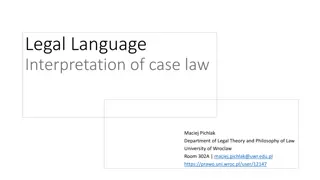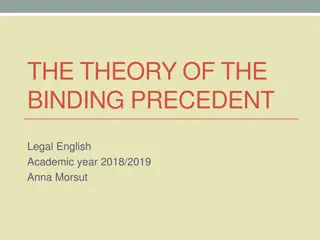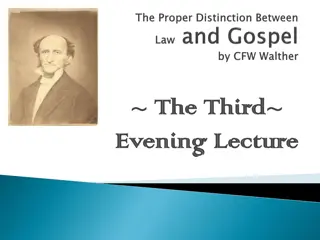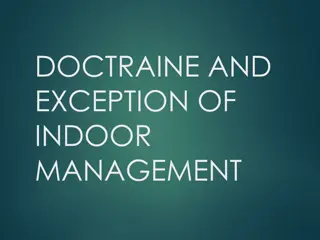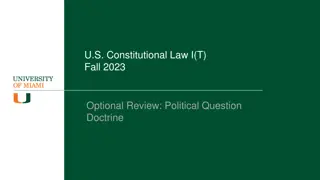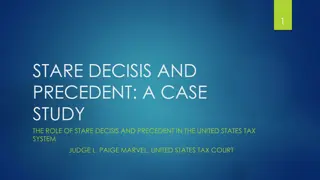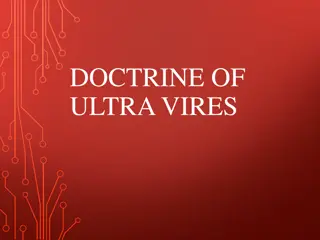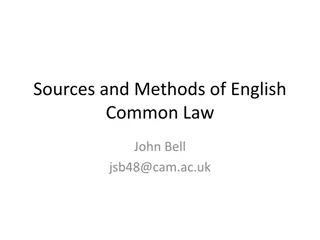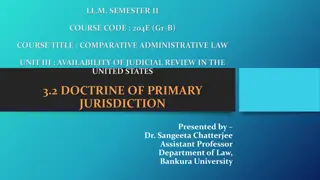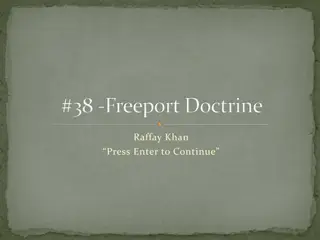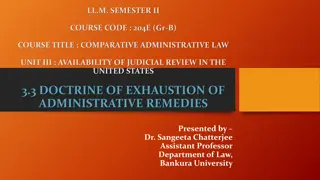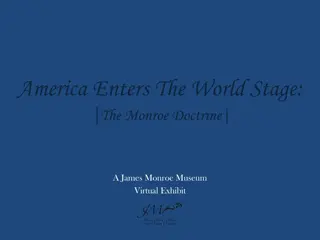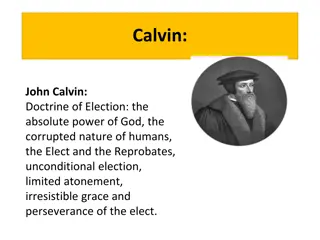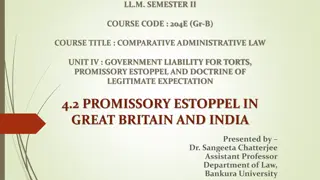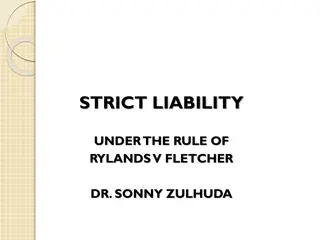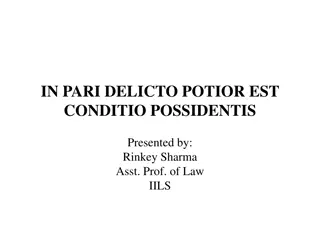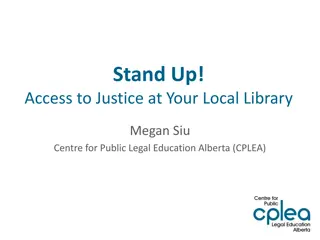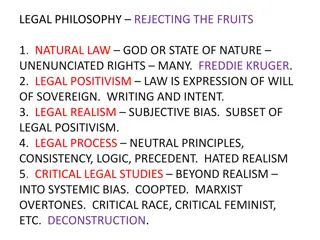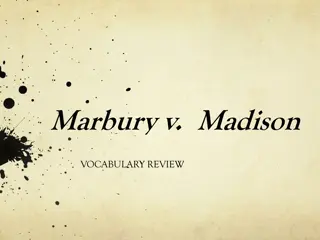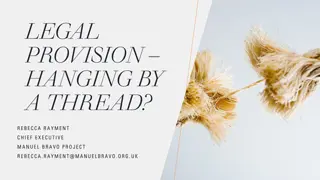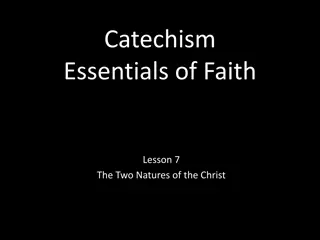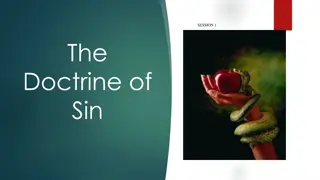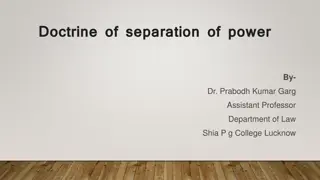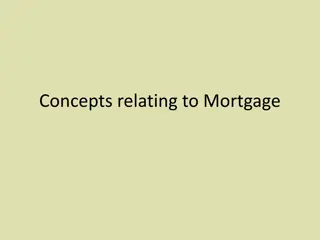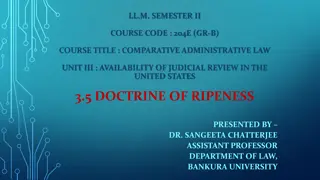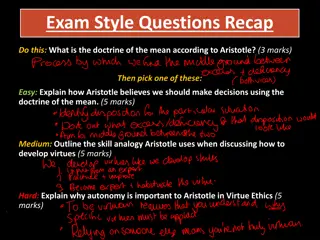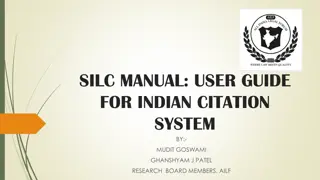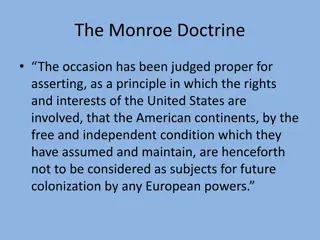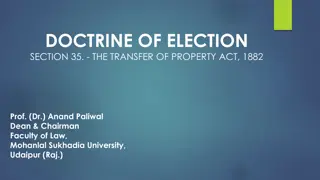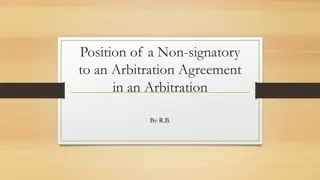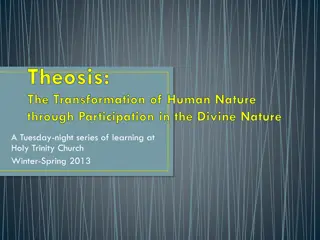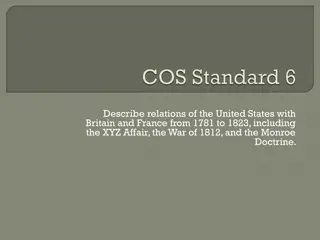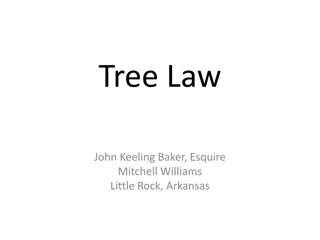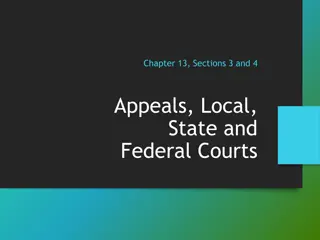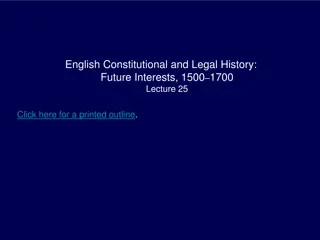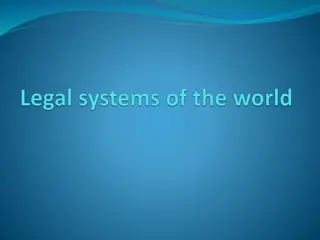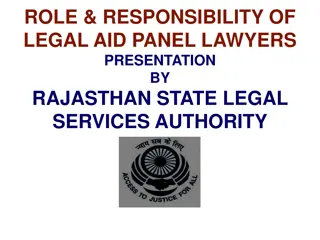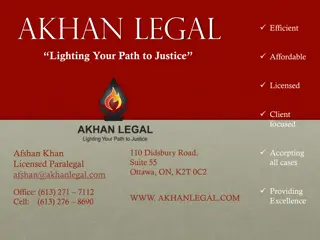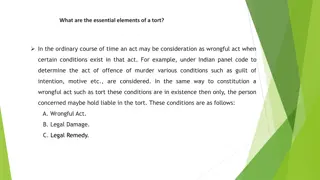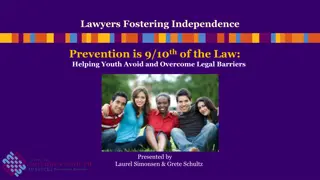Understanding the Doctrine of Precedent in the UK Legal System
The doctrine of precedent, also known as stare decisis, is a fundamental principle in the UK legal system that requires courts to follow previous decisions on similar facts. This system ensures consistency and predictability in the application of law. The hierarchy of courts dictates the binding nature of precedents, with the Supreme Court being the highest authority since 2009. Judges must either follow, distinguish, or cite precedents when making decisions, maintaining a structured approach to legal reasoning.
Download Presentation

Please find below an Image/Link to download the presentation.
The content on the website is provided AS IS for your information and personal use only. It may not be sold, licensed, or shared on other websites without obtaining consent from the author. Download presentation by click this link. If you encounter any issues during the download, it is possible that the publisher has removed the file from their server.
E N D
Presentation Transcript
Revision 1. Outline the system of civil courts in the UK. 2. Outline the system of criminal courts in the UK. 3. Who are justices of the peace? 4. What was the highest court in the UK before 2009? 5. Who is responsible for judicial appointments? Naslov predavanja Autor predavanja 2
Precedent A previous decision made by a superior court on similar facts - the rule of precedent requires that in certain circumstances a decision made on a legal point made in an earlier case must be followed The doctrine of precedent (stare decisis) The hierarchy of courts Naslov predavanja Autor predavanja 3
The doctrine of precedent Stare decisis : the doctrine of judicial precedent is based on stare decisis abiding by a previous decision. / Once a point of law has been decided in a particular case, that law must be applied in all future cases with the same material facts. / The doctrine is: - All courts are bound to follow decisions made by their superior courts (courts above them); - Appellate courts are normally bound by their own past decisions
How can a precedent be treated? How does the doctrine of precedent work? The counsels and the judge can: Judges are required to follow the decisions made in previous cases. attention of the court 2.FOLLOW a precedent establish that the principles applied in the precedent correspond to the case in hand and abide by the precedent 3.DISTINGUISH THE CASE find that the facts of the case are different and that the same principles, i.e. precedent cannot or should not be applied 1.CITE a precedent, a case bring a precedent to the By doing so, they secure a consistency in the law . Also, people referring their cases to law can make an educated guess about the likely outcome of their case (i.e. about their potential success ) Naslov predavanja Autor predavanja 5
The Hierarchy of Courts - relationship of mutual superiority/inferiority between courts within the same branch - there may also be equality between courts of the same level within the same branch but the judges in these courts are also expected to follow each other s precedents and to explain their decision not to do so. - when a point of European Law is involved, the decisions of the European Court of Justice are binding on all courts in England and Wales - the House of Lords used to be the highest court in England and Wales; since 1 October 2009 it is the Supreme Court of the United Kingdom
The Hierarchy of Courts (cont.) - when a point of European Law is involved, the decisions of the European Court of Justice are binding on all courts in England and Wales - the House of Lords used to be the highest court in England and Wales; - since 1 October 2009 this role was assumed by the Supreme Court of the United Kingdom
Types of precedents Original Declaratory Binding Persuasive
Original Precedent If there is no previous decision on a point of law that has to be decided by a court, the decision made in that case on that point of law is viewed as an original precedent When precedent, the court will reason by analogy (in principle, it would consider the cases nearest to that being tried) it needs to form an original
Declaratory precedent: - the judges in the case used as precedent merely declared what the law has always been - declaratory theory of law making - William Blackstone, judges do not create or change laws. They simply discover and declare what the law has always been. - i.e. case law operates retrospectively since the law, as declared, has always existed. Naslov predavanja Autor predavanja 11
Binding Precedent: - A past decision is binding if: the legal point involved is the same as the legal point in the case that is being decided the earlier decision was made by a court superior to the present court, or by a court at the same level which is bound by its own past judgments the point was argued in the case
Persuasive Precedent: - a precedent that will be considered by the court and by which the court may be persuaded, but which the court does not have to follow, e.g. - obiter dicta, - a dissenting judgment, or - ratios from decisions by inferior courts (courts that are lower in the hierarchy) Naslov predavanja Autor predavanja 13
Law Reports The reasons for decisions of past cases must be properly recorded in order for the precedent system to operate effectively. From 1537 to 1863 various private law reports were used. Since 1863 the Incorporated Council of Law Reporting has been producing the official law reports. Judgments of superior courts are available on their official sites on the Internet Naslov predavanja Autor predavanja 14
Ratio decidendi Ratio decidendi = the reason for the decision principles of law essential to the decision at hand. - It is also defined as: any rule expressly or impliedly treated by the judge as a necessary step in reaching his conclusion . 15
Ratio decidendi (cont.) The functioning of the doctrine of judicial precedent rests on the possibility to determine what a point of law is. While delivering a judgment, judges set out their reasons for reaching a decision. These reasons on which judges base their decisions are called the ratio decidendi of the case. Ratio decidendi forms the legal principle that becomes a binding precedent. This precedent must then be followed in all future cases with the same (or similar) material facts. 16
Obiter dicta Statements in passing ( things said by the way ) Statements of principles of law not relevant to the decision in the case Although not relevant, they can be persuasive Naslov predavanja Autor predavanja 17
Options for Avoiding the Precedent Judges may avoid to follow a previous precedent by: Overruling = a court higher in the hierarchy departs from a decision made in a lower court. The previous decision is no longer binding. Reversing = a higher court departs from the decision of the lower court on appeal. Distinguishing = the facts of the case are deemed suf- ficiently different so that the previous case is no longer binding
Arguments in Favour of the Doctrine of Precedent Time saving Certainty Justice Consistency Flexibility Naslov predavanja Autor predavanja 19
Arguments Against the Doctrine Promotes laziness Stagnation Backwards looking Difficult to remedy mistakes Naslov predavanja Autor predavanja 20
Vocabulary Binding precedent obvezuju i presedan Persuasive precedent preporu ljivi presedan Precedent law pravo rije enih slu ajeva Divisional courts sudski odjeli Visokog suda Law Reports zbirka sudskih odluka Dissenting judgment nejednoglasna sudska odluka (odluka uz izdvojeno mi ljenje) Ratio decidendi razlog za dono enje odluke Obiter dicta usputne primjedbe


